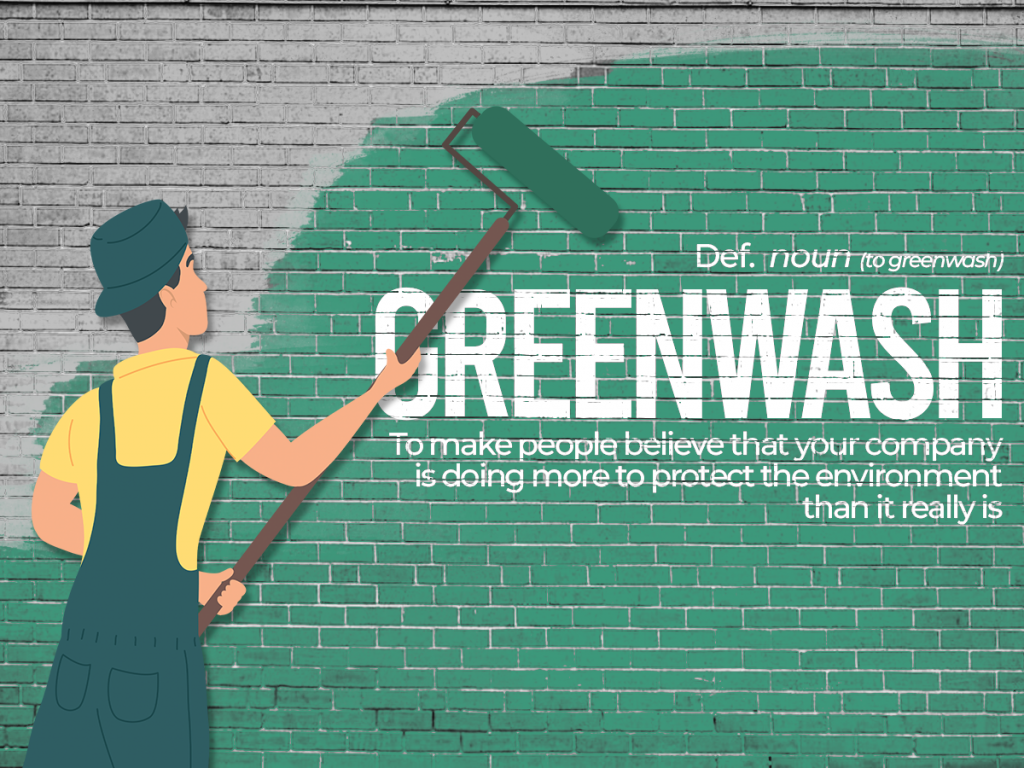Label volunteer writer, Lorenzo Lo Vaglio, talks us through what exactly ‘greenwashing’ is and why it’s such a big problem.
Anyone remotely interested in what is happening in the world will have heard the word greenwashing by now. But what is it all about?
Formally, greenwashing could be defined as ‘Making false, misleading, unsubstantiated, or otherwise incomplete claims about the sustainability of a product, service, or business operation‘. In itself, this definition is vague at the very best.
An example is the case of H&M. The Swedish brand was sued in a Missouri court over their range of ‘Conscious Choice’ products. The prosecution claims that there is no environmental concern behind these products at all, in fact quite the opposite. Claims that, like most of the brands other products, this range was in fact neither sustainable nor was it environmentally focused at all.
But this is not the only case of Greenwashing that has recently appeared in newspapers all over the world, even (and especially) in sport. The International Cricket Council, in fact, about a month ago announced a sponsorship deal with the Saudi company Aramco, the world’s largest oil producer and estimated to have been responsible for 4% of global greenhouse gas emissions since 1965. The deal runs until next year and covers all the ICC’s major global events, including the current T20 World Cup in Australia. The deal itself doesn’t look great given cricket’s place at the forefront of the climate crisis.
Similarly, with one month to go until the inaugural match, the World Cup in Qatar looked like a great opportunity to promote ‘the first carbon neutral World Cup’. Unfortunately, it seems that the organisers forgot about this carbon neutral promise… or who knows, maybe they lost the memo. Environmentalists from around the world took little time to call out the organization for the lack of transparency and their overall dishonesty.
The lack of provisions concerning respect for the environment were vigorously contested by the followers of Greta Thunberg. But others are confident in the event and believe that the organisers must have just forgotten about their environmental promises, and will manage to rearrange the entire event to have zero environmental impact…maybe.
Behind the neologism ‘greenwashing’ is the communication strategy of certain companies, organisations or institutions aimed at building a deceptively positive self-image in terms of environmental impact. This was created in order to divert public attention from the negative environmental effects of their activities or products, the technique which was established as early as the 1970s is continuing to grow in usage.
In fact, as early as 1992 in the USA, the US Environmental Protection Agency published a series of guides for environmental marketing claims that defined the first rules on greenwash, especially for advertising agencies. A couple of years later, in 1998, the UK government published the Green Claims Code, in which rules on green messages and product claims are defined.
In England, advertisements are scrutinised by the ASA (Advertising Standards Authority), which takes action if they are considered a case of greenwash, forcing the company to withdraw the advertisement. In Canada, on the other hand, the Competition Bureau has created guidelines that Canadian companies must follow in order not to mislead consumers by incurring administrative and/or criminal penalties if they fail to adhere. Furthermore, these guidelines emphasise the importance of using ‘clear, specific, verified and substantiated’ claims.
Greenwashing is illegal, but so very few organisations are willing to abide by the law.
Thus, with the increasingly worrying rise in sea levels due to melting glaciers caused by CO2 production, it seems “we’re going to need a bigger boat.” (Jaws, 1975).
Edited By: Rachel Cannings (Culture and Entertainment Editor)
Design By: Sarim Mangi (Head of Design)


